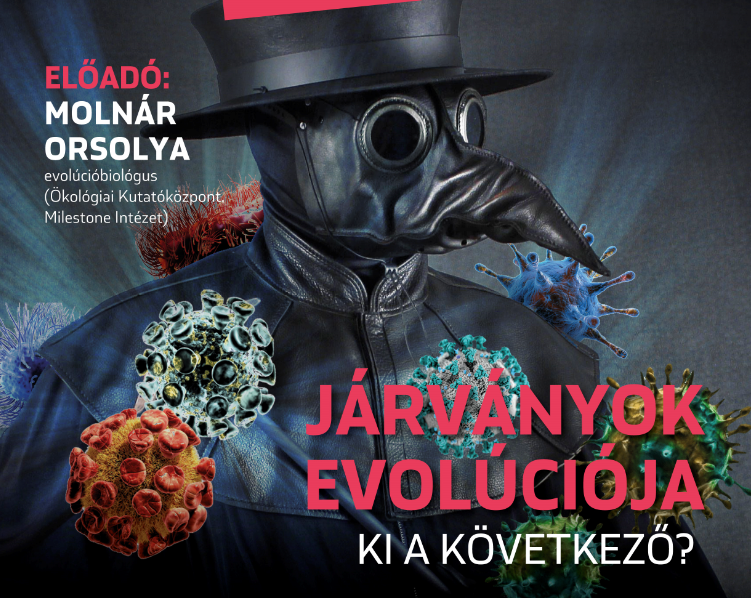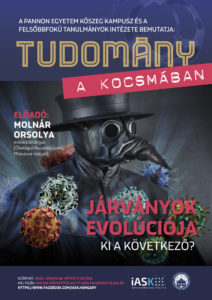Research & Studies


Evolution of Epidemics – Who’s next?
Lecturer. Orsolya Molnár (evolution-biologist – Centre for Ecological Research, Milestone Institute)
Date: 8th of June 2020 on Monday at 5 p.m.
The lecture was available on the Facebook-page of iASK: (https://www.facebook.com/iask.hungary).
How Epidemics Develop
For years now The Institute of Advanced Studies Kőszeg has organized a ‘Science in the Pub’ series – lectures of public interest in Kőszeg restaurants. On June 8, the topic was the development and spread of epidemics – but because of the coronavirus epidemic, for the first time, the presentation took place online, without a live audience.
According to evolution biologist Dr. Orsolya Molnár, the Covid-19 pandemic, with its more than 7 million illnesses and more than 400,000 deaths worldwide, proves that scientific research and economic, political, and social actors need to work together to successfully cope with emerging diseases. This is because a series of epidemics are caused by diseases not previously known or considered extinct. 14 such diseases were listed in 2004 and 30 in 2017. What’s worse is that newer and newer versions of already known diseases emerge and spread from one continent to another.
The biological cause of epidemics is that pathogens successfully pass on their infectious properties from one generation to the next, and adapt rapidly to the conditions in new environments. Should they be able to find – and they often are – more and more intermediate hosts (i.e. a new species of mosquitoes to carry the malaria virus), this will only help in spreading the disease. In addition, epidemics are spread over greater geographical areas due to climate change, globalization, and urbanization.
The danger grows. Previously unknown diseases such as zika, chikungunya, lluvia or those already known, e.g. ebola are spreading and their numbers are expected to continue to grow. As the variety of pathogens increases, it is to be expected that the number of local epidemics and possibly pandemics will also increase.
Today, barely 10% of pathogens are known to science, the rest are yet to be discovered. We need to know how they spread, how they mutate, what is their infectious capacity – and how to defend against them. For this complex task, an international research group working with the participation of Hungarian experts and research institutes have developed the ‘DAMA’ protocol. ‘D’ stands for the need for documentation; a dynamic database must be created that combines knowledge existing in the world, including the properties of local variants of each pathogen. The point being that science need to find the pathogens before they find us. ‘A’ summarizes the risk analyses, e.g. what are the chances, the possible directions of the spread of the disease or the development of a dangerous variant of a yet innocent pathogen as a result of it mutating. After identifying high-risk strains, the task is to follow, monitor them, as indicated by the initial letter ‘M’. Finally, the second ‘A’ means action. In essence, this is the need to strengthen communication between natural sciences and the non-scientific world. Equally important is the joint action of science, politics, the economy and society to avoid and reduce the damage caused by devastating epidemics. – Dr. Orsolya Molnár said.
Science in the Pub lecture was held in Hungarian!
© 2017-2023, All Rights Reserved